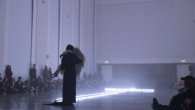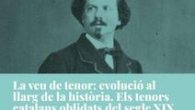Jordi Vila Rufas: art and craft / Exhibitions / Visit us / Home

Start date: 12/19/2024 End date: 22/01/2025
Place:
Zero Space
Schedule:
From Monday to Friday, from 9 a.m. to 8 p.m. Saturdays, from 10 a.m. to 2 p.m.
Curatorship:
Roser Insenser Brufau and Xavier Soler Ávila. Graphics Unit.
Jordi Vila Rufas (Barcelona, 1924 – 2011) belongs to a line of artists. The father – and also a teacher -, Joan Vila ‘d’Ivori’, knew how to stimulate the sons, Jordi, and his brother Francesc d’Assís (Cesc) – with whom he collaborated several times -, in their first you pass as artists. The two brothers studied at Escola Massana, where Jordi was a student from 1941, and then a teacher, from 1952 until approximately 1990.
Described by Josep F. Ràfols as a painter and altar painter, Vila Rufas has bequeathed us a large amount of work in both civil and religious buildings. As an altarpiece artist, he stood out with works that are technically in line with the Gothic tradition – such as the applications of gold or silver bread or the burnished – which he brings to his style based on the combination with modern techniques. As a painter, he has left us works in many buildings throughout Catalonia. However, it is also necessary to highlight his work as an illustrator and designer, both of advertising and of reminders and other ephemera and decorative objects.
His style belongs to what has been defined as new figuration of the mid-20th century, that is to say, a figurative current – or abstract-figurative – contemporary with the second abstract avant-gardes with which he lived. A figuration that he conveyed based on a sketched and stylized expressionism, at the same time geometrizing.
Heir to the artistic professions of the Massana School in years in which a certain noucentist temperament is still creeping into teaching, his relationship with the tradition he expressed it with gusto for the use in his works of the golden ratio as a framework at a compositional level. And at a time when Massana was approaching what was understood as a school of fine arts, Vila Rufas affirmed ‘We are a vocational school, not a literature school‘, thus giving value to tradition and the artistic craft, in which he introduced differential elements or a certain approach to modernity.
Important works in his career are the altarpieces of the church of Sant Joan de Vilassar (1948-1954), the altarpieces of Sant Cugat (1953) or the chapel of Col·legi Adela de Trenquelleon in Barcelona (1960). He exhibited in various Barcelona halls and competitions, such as the Sala Vayreda, Jaimes, the Salons de Maig, etc., and won prizes in some group exhibitions, such as the National Exhibition of Decorative Arts in 1947. He was also present in several Spanish cities such as Madrid and Salamanca, and from Paris he was part of the Groupe Reflets. He also participated in several collectives in New York and Chicago in 1960.
The selection of pieces that we present allows us to have a bird’s-eye view of the different aspects of his work based, basically, on prints, ephemeral materials, sketches and preliminary drawings, which provide us with an approximation of the creative process of an artist who deserves to be vindicated and studied as one of the representatives of the new Catalan figuration of the 20th century.









